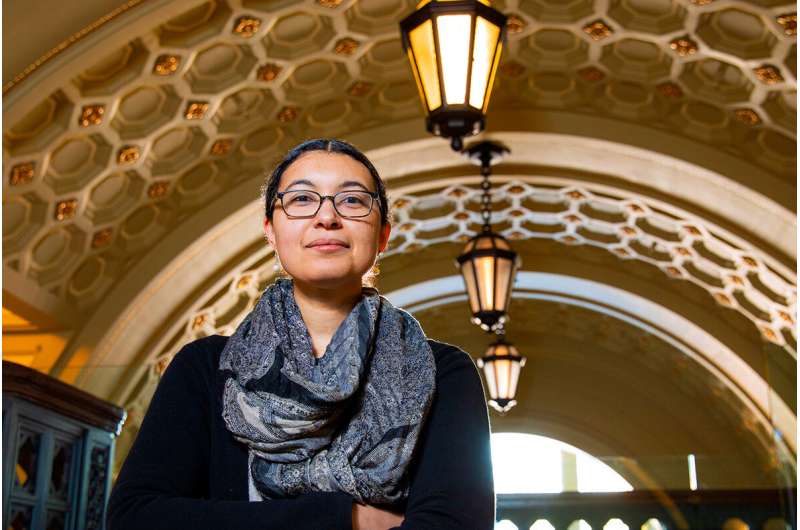How should we talk about our relative risk for COVID-19?

A key message coming through about COVID-19 is that older folks face much greater danger. But what might that suggest to the young about their own risk? It's called a "social comparison frame" and it's something health communicators have to worry about—or should. Cabral Bigman is a communication professor at the University of Illinois at Urbana-Champaign who specializes in communication about risk and inequality related to health. She spoke with News Bureau social sciences editor Craig Chamberlain.
What makes public messaging about relative risk in an epidemic such a challenge?
Health communicators need to be honest and provide clear, timely and accurate information about risks and the actions people can take to address those risks. But it can be a challenge to strike the right balance and communicate risk in a way that people understand, conveying the seriousness of the situation without sensationalizing or over-reassuring the public.
With a new disease, the fact that the science is evolving introduces uncertainty and poses additional communication challenges. Acknowledging that there is uncertainty is part of good risk communication. As the science evolves, it may be necessarily to revise what was communicated earlier. If the public doesn't feel that communicators have been honest with them about what is known and what is not known, that can undermine public trust and communicator credibility.
What's helpful and harmful in the media messages we've received about risk from the virus?
It's helpful to communicate who is at risk and what people can do to protect both themselves and vulnerable others. That means it can be beneficial when news coverage communicates that the novel coronavirus poses more risk to older people and those with underlying medical conditions.
But there can also be some unintended consequences when coverage focuses on comparing risks between groups. Research suggests media messages that emphasize comparative risk between different social groups—in other words, using social comparison frames—can lower perceived risk for the less-at-risk group.
In the case of COVID-19, the less-at-risk group is understood to be the young and healthy. And images of college students partying on Florida beaches come to mind. What are they missing or what's missing in the health warnings?
Those images of students partying during spring break have been a notable part of the coverage. The young students in my risk communication course even brought it up. It is a good example of how social comparison framing may have left some young people feeling immune to the disease or that it posed little danger if they got it.
Risk communicators have been trying to convey that it is important to physically distance, wash our hands for 20 seconds, not touch our faces, and take other precautionary steps even if we aren't in one of the high-risk groups, in order to protect others. One impression, however, has been that it wasn't that big of a deal for people who are young and healthy.
As the pandemic spreads, we are starting to hear more about younger people who were described as previously healthy and without known underlying conditions experiencing serious health effects from COVID-19 and being hospitalized. There have been deaths. Less risk does not mean no risk.
How can health communicators or the news media counter such perceptions? Or what should we, as news consumers, keep in mind?
One thing to keep in mind is that it can be hard to wrap your head around relative risk statistics and big, abstract numbers. Statistics don't leave the same impression as seeing a person who has experienced something like COVID-19 or hearing their story. Those individual cases can be more memorable and persuasive in conveying risk.
What that means is that communicators and the news media should consider who they feature in coverage so those examples, or exemplars, help to convey the full picture of who is at risk and how people can respond positively to help protect both themselves and others.
In terms of advice for news consumers, there is a lot of information and misinformation out there. I would recommend listening to the experts and checking out the CDC's COVID-19 website, as well as your local public health department website, to help navigate the flood.





















